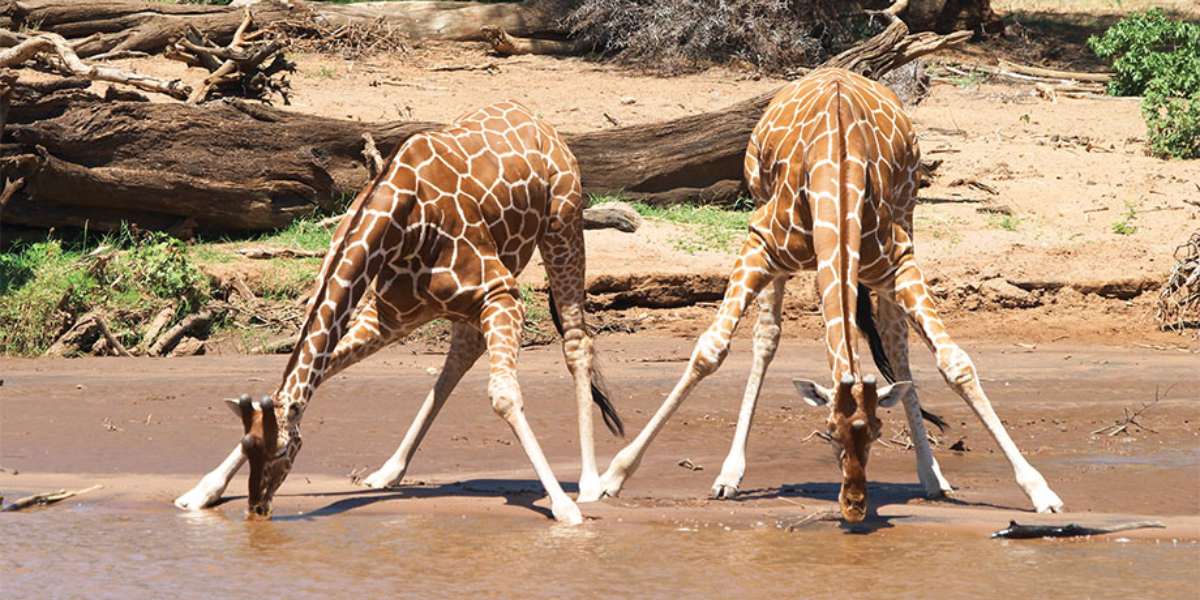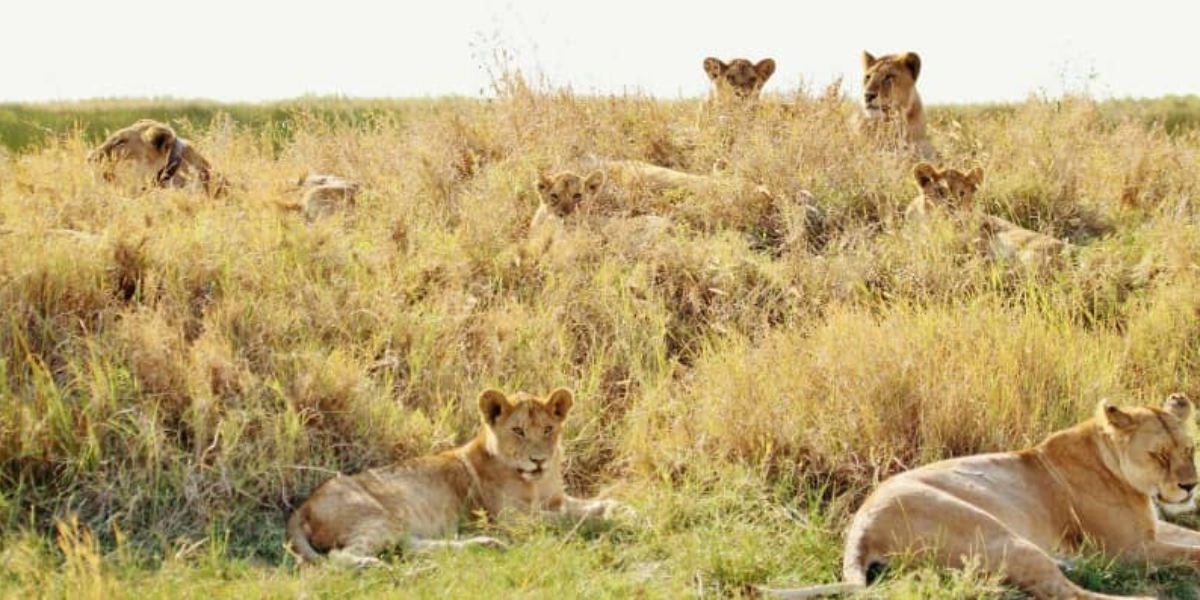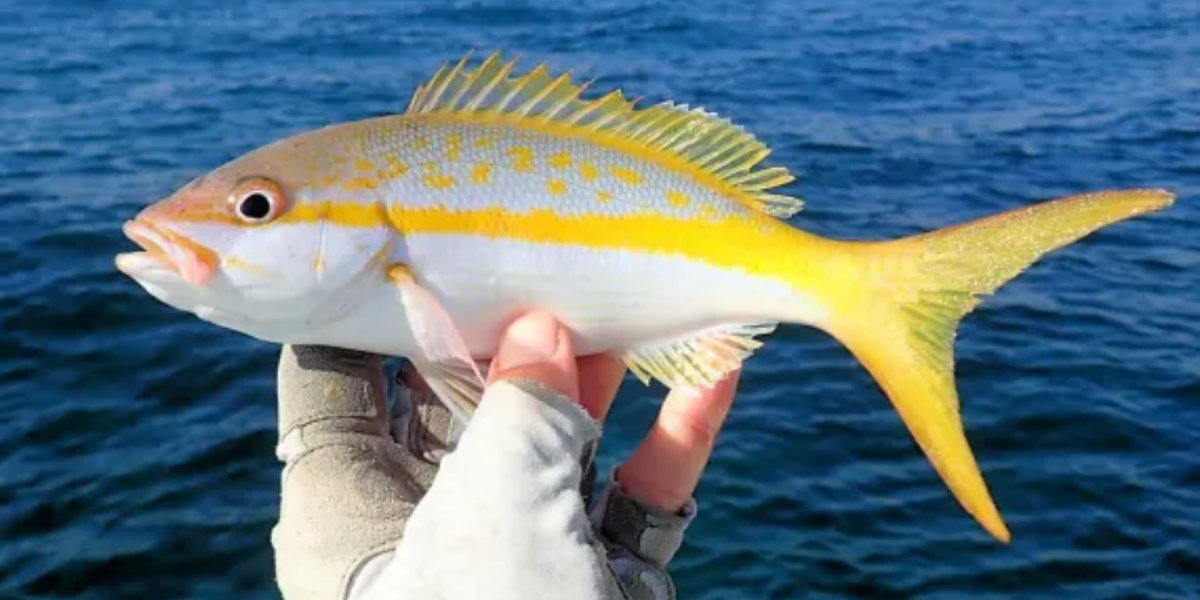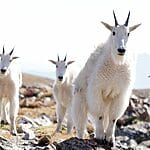14 Interesting Animals in Nigeria – You Might Not Know
Nigeria, with its diverse ecosystems spanning from lush rainforests to savannas and coastal areas along the Atlantic Ocean, hosts a myriad of interesting animals. In the forests of Cross River State, the critically endangered Cross River gorilla roams, alongside a rich diversity of bird species.
Some of the most interesting animals in Nigeria are the majestic African elephant, the agile chimpanzee, and the iconic lion, which can be found in national parks such as Yankari Game Reserve and Kainji Lake National Park.

Additionally, Nigeria is home to unique species like the rare Nigerian giraffe, highlighting the country’s conservation efforts and ecological significance. Tourists visiting Nigerian national parks can immerse themselves in unforgettable experiences, including thrilling game drives to observe wildlife in their natural habitats.

Birdwatching expeditions to spot diverse avian species and guided nature walks through lush forests teeming with life. From exploring the vast savannas of Yankari Game Reserve to discovering the scenic beauty of Kainji Lake National Park, Nigeria offers a wealth of opportunities for nature enthusiasts and adventurers
Where to Find Interesting Animals in Nigeria – (With Interesting Pictures of Nigerian Animals)
In Nigeria, fascinating animals can be found across various regions, each boasting its unique ecosystems and wildlife. Explore the dense rainforests of Cross River State to encounter the critically endangered Cross River gorilla and a diverse array of bird species.
Visit Yankari Game Reserve in Bauchi State for sightings of African elephants, lions, and buffalo roaming the savannas. In the Niger Delta region, explore the mangrove swamps to spot crocodiles, hippos, and various bird species.
Moreover, we have gathered the 14 most interesting animals in Nigeria, and the best points to spot them in Nigeria.
African Forest Elephant
The African Forest Elephant, scientifically known as Loxodonta cyclotis, is a remarkable species inhabiting the dense rainforests of Central and West Africa, including Nigeria. However, they can also be found in other countries like Cameroon, Gabon, and the Democratic Republic of Congo.
African Forest Elephants are distinguished by their smaller size compared to their Savannah counterparts, with straighter tusks and rounded ears.

In Nigeria, one of the best places to spot African forest elephants is within the confines of Cross River National Park, where they roam freely amidst the lush vegetation and diverse wildlife.
Despite their natural habitat, they are facing significant threats, this elephant species is facing threats leading to their classification as “Vulnerable Species” on the IUCN Red List. Poaching for ivory, habitat loss due to deforestation and human encroachment, and conflicts with agricultural activities pose grave dangers to their population.
Conservation efforts, including protected areas and anti-poaching measures, are crucial for preserving the unique biodiversity of the rainforests and ensuring the survival of interesting animals in Nigeria like the African Forest Elephant.
Do you know?
The African forest elephant, one of the three elephant species, that it plays a vital role in maintaining the biodiversity of its habitat.
African Savanna Elephant/ African Bush Elephant
The African Savanna Elephant, scientifically known as Loxodonta africana, is one of the most iconic and interesting animals in Nigeria and across the African continent. These interesting animals primarily inhabit the vast savannas and grasslands of sub-Saharan Africa, where they roam in large herds, grazing on grasses, leaves, and fruits.
These elephants have large size, elongated tusks, and distinctive wrinkled skin, African Savanna Elephants are truly impressive creatures.

These wild animals can be found in various countries across Africa, including Kenya, Tanzania, Botswana, and South Africa. In Nigeria, one of the best places to spot African Savanna Elephants is within the expansive Yankari Game Reserve, renowned for its diverse wildlife and stunning landscapes.
Despite their widespread distribution, African Savanna Elephants face significant threats to their populations, including habitat loss, poaching for ivory, and human-wildlife conflict.
These interesting animals are classified as “Vulnerable Species” on the IUCN Red List. Conservation efforts aimed at protecting their habitats, and combating poaching.
African Buffalo
The African Buffalo, scientifically known as Syncerus caffer. It is a formidable and iconic species found across the savannas, grasslands, and woodlands of sub-Saharan Africa. Besides Nigeria, African Buffaloes inhabit various countries including Kenya, Tanzania, South Africa, and Zambia.
These are interesting animals in Nigeria and have robust build, large curved horns, and dark brown coats, African Buffaloes are known for their formidable presence in the wild.

In Nigeria, one of the best places to spot African Buffaloes is within Yankari Game Reserve, renowned for its rich biodiversity and extensive savannas. These impressive herbivores are classified as “Least Concern” on the IUCN Red List, showing their relatively stable populations.
However, African Buffaloes face threats from habitat loss due to human encroachment, poaching for their meat and hides, and diseases transmitted from livestock.
Red River Hog
The Red River Hog, scientifically known as Potamochoerus porcus, is a fascinating and distinctive member of Nigeria’s diverse wildlife. These striking pigs are native to the dense forests and grasslands of West and Central Africa, including countries like Cameroon, Gabon, and Congo.
Known for their distinctive appearance, Red River Hogs have striking reddish-brown fur with black and white markings, along with prominent facial wattles and long tufts of hair along their backs.

In Nigeria, one of the best places to spot Red River Hogs is within the expansive woodlands of Yankari Game Reserve, where they roam freely amidst lush vegetation. Despite their widespread distribution, Red River Hogs are listed as “Least Concern” on the IUCN Red List, indicating stable populations.
However, these interesting animals in Nigeria are facing threats from habitat loss due to deforestation, illegal hunting for bushmeat, and human-wildlife conflict.
West African Worm Lizard
The West African Worm Lizard, scientifically known as Cynisca leucura, is an interesting burrowing reptile endemic to Nigeria and other West African countries. It thrives in various habitats including sandy soils, savannas, and grasslands, where it spends most of its time underground.
Their appearance is characterized by a cylindrical body with reduced limbs, resembling earthworms, which aids in their burrowing lifestyle.

These interesting animals in Nigeria are also found in neighboring countries such as Ghana, Togo, Benin, and Cameroon. In Nigeria, one of the best places to spot the West African Worm Lizard is within the expansive savannas of Yankari Game Reserve, known for its diverse wildlife and rich biodiversity.
Currently, the IUCN Red List status of the West African Worm Lizard is not well-documented, and further research is needed to assess its conservation status.
However, like many other reptiles, the West African Worm Lizard faces threats from habitat destruction due to agricultural expansion, urbanization, and land degradation.
West African Lion
The West African Lion, scientifically known as Panthera leo senegalensis, is a majestic and iconic species inhabiting the savannas and grasslands of West Africa, including Nigeria. Besides Nigeria, West African Lions are found in countries like Senegal, Benin, and Burkina Faso, where they roam vast territories in search of prey.
These lions have golden fur, powerful build, and distinctive mane, West African Lions are apex predators, playing a vital role in maintaining the ecological balance of their habitats.

In Nigeria, one of the best places to spot West African Lions is within Yankari Game Reserve, renowned for its diverse wildlife and expansive savannas. However, these nocturnal mammals face significant threats to their survival, leading to their classification as “Critically Endangered Animals” on the IUCN Red List.
These animals in Nigeria are facing threats such as habitat loss due to human encroachment, poaching for trophies, and traditional medicine.
Cross River Gorilla
The Cross River Gorilla, scientifically known as Gorilla gorilla diehli, is a Critically Endangered subspecies of the western gorilla found in the mountainous and forested regions along the Nigeria-Cameroon border.
This subspecies is distinguished by its smaller population size and distinct genetic makeup. Apart from Nigeria, Cross River Gorillas inhabit parts of Cameroon’s Cross River region. These elusive primates have a striking appearance, characterized by robust builds, dark fur, and pronounced brow ridges.

In Nigeria, the best place to spot Cross River Gorillas is within the Cross River National Park, where they inhabit the dense forests and rugged terrain.
Despite their significance as one of the most interesting animals in Nigeria, Cross River Gorillas are listed as “Critically Endangered Animals” on the IUCN Red List due to habitat loss, fragmentation, poaching, and human-wildlife conflict.
Their population is facing severe threats from deforestation, agricultural expansion, and hunting pressures, which is diminishing their numbers.
African Wolf
The African Wolf, scientifically known as Canis luster, is a fascinating canid species native to the vast savannas and grasslands of North Africa, including regions beyond Nigeria such as Sudan, Chad, and Ethiopia.
It looks like a smaller version of the gray wolf, the African Wolf typically sports a sandy or reddish coat, adapted to blend seamlessly with its arid surroundings. These elusive predators are known for their solitary nature and nocturnal habits, hunting small mammals, birds, and reptiles under the cover of darkness.

While sightings of African Wolves are rare, they can occasionally be spotted in protected areas like the Yankari Game Reserve in Nigeria. Additionally, they are not currently evaluated on the IUCN Red List.
Nonetheless, like many other wildlife species, these interesting animals in Nigeria
are facing threats from habitat loss, human encroachment, and conflict with livestock farmers.
Dama Gazelle
The Dama Gazelle, scientifically known as Gazella dama, is a graceful and endangered antelope species native to the Sahara Desert and Sahel regions of North Africa.
These interesting animals in Nigeria are also found in countries like Chad, Niger, and Mali, where they inhabit arid and semi-arid landscapes characterized by sparse vegetation and sandy plains.

With their striking white coats adorned with chestnut markings and long, slender horns, Dama Gazelles possess a distinct beauty that has captivated observers for centuries.
In Nigeria, the Yankari Game Reserve stands out as a potential spot to glimpse these elusive antelopes, where they roam in small herds, often seeking refuge in the reserve’s acacia woodlands and grasslands.
Sadly, the Dama Gazelle is “Critically Endangered,” facing threats such as habitat degradation, overhunting, and competition with livestock for resources.
Yellowtail Snapper
The Yellowtail Snapper, scientifically known as Ocyurus chrysurus, is a vibrant and popular reef fish species found in the warm waters of the Western Atlantic Ocean and the Caribbean Sea.
While not commonly found in Nigerian waters, Yellowtail Snappers inhabit coral reefs, rocky outcrops, and seagrass beds throughout their range, including regions such as the Florida Keys, the Bahamas, and the Caribbean islands.

These interesting animals in Nigeria have brilliant yellow tails, sleek silver bodies, and distinct blue stripes running along their sides. Although rarely spotted in Nigerian waters, they can occasionally be found near coral reefs and rocky formations in the Gulf of Guinea.
Currently, the Yellowtail Snapper is not assessed by the IUCN Red List, but their populations may face threats from overfishing, habitat degradation, and climate change,
Worm Lizard
The Worm Lizard, scientifically known as Amphisbaenia, is a fascinating reptile species characterized by its elongated, cylindrical body and reduced limbs, resembling a worm. These secretive creatures primarily inhabit underground burrows in sandy or loamy soils, where they feed on insects, larvae, and small invertebrates.
These interesting animals in Nigeria are found in various regions across the world, including parts of South America, North America, Europe, Asia, and Australia. With their unique appearance and cryptic lifestyle, spotting Worm Lizards can be challenging.

In Nigeria, suitable habitats with loose, sandy soils and minimal disturbance could potentially harbor these elusive reptiles. The IUCN Red List status of Worm Lizards varies depending on the species, but many are not assessed due to limited data.
Nonetheless, like many reptiles, Worm Lizards face threats from habitat destruction, urbanization, and agricultural activities, which contribute to population declines and habitat fragmentation,
Giant Forest Gecko
The Giant Forest Gecko, scientifically known as Cosymbotus platyurus, is a captivating reptile species native to the rainforests of Southeast Asia, particularly in countries like Malaysia, Indonesia, and the Philippines.
This arboreal gecko inhabits dense, humid forests, where it can be found hiding among foliage and tree branches. With its large size, reaching up to 30 centimeters in length, and distinctive flattened tail, the Giant Forest Gecko exhibits remarkable adaptability to its arboreal habitat.

While not naturally found in Nigeria, similar forested regions with suitable climates and abundant vegetation could potentially support populations of this intriguing reptile. Due to its elusive nature and preference for forested habitats, spotting the Giant Forest Gecko in Nigeria is challenging.
The IUCN Red List does not specifically assess the Giant Forest Gecko, but habitat loss, deforestation, and illegal pet trade pose significant threats to its populations across its range.
Forest Shrew
The Forest Shrew, scientifically known as Sylvisorex ollula, is a small mammal species belonging to the family Soricidae. These intriguing creatures inhabit dense forests and undergrowth, where they forage for insects, worms, and small invertebrates.
They are found in various forested regions across sub-Saharan Africa, including countries like Cameroon, Gabon, and the Democratic Republic of the Congo.

With their sleek bodies, pointed snouts, and velvety fur, Forest Shrews are well-adapted for navigating through the leaf litter and underbrush of their forest habitats.
Additionally, the best places to spot Forest Shrews in Nigeria would likely be within the Nigerian southern rainforests, such as those found in Cross River State.
On the IUCN red list of threatened species, these interesting animals in Nigeria are listed as “Least Concern.” But like many small mammal species, their population is facing some major threats from habitat loss due to deforestation, agricultural expansion, and human encroachment
Rock Firefinch -Endemic Species
The Rock Firefinch, scientifically known as Lagonosticta sanguinodorsalis, is a charming and colorful bird species found across the rocky outcrops and scrublands of Nigeria, particularly in the northern regions.
Rock Firefinches are also distributed in other West African countries such as Ghana, Cameroon, and Niger. These small finches exhibit striking plumage, with males displaying vibrant crimson feathers on their backs and wings, contrasting with their black faces and white bellies, while females are generally less colorful.

The best places to spot Rock Firefinches in Nigeria include rocky habitats, cliffs, and arid landscapes where they forage for seeds, insects, and grasses. Rock Firefinches are classified as a species of “Least Concern” on the IUCN Red List.
However, their populations are threatened by habitat loss and degradation due to agricultural expansion, urbanization, and deforestation.
Interesting and Endangered Species in Nigeria
There are many critically endangered animals in Nigeria, that are facing threats for their survival. Some of them are given below.
Nigerian Giraffe (Giraffa camelopardalis peralta): The Nigerian Giraffe is a rare subspecies facing threats from habitat fragmentation and poaching, making it endangered in Nigeria.
Pangolins: Both the Tree Pangolin (Manis tricuspis) and Giant Pangolin (Smutsia gigantea) are endangered in Nigeria due to illegal wildlife trade and habitat loss.
African Elephant (Loxodonta africana): While historically abundant, African Elephants face threats from poaching and habitat destruction, putting them at risk of extinction in Nigeria.
African Wild Dog (Lycaon pictus): The African Wild Dog, also known as the Painted Wolf, is endangered in Nigeria due to habitat loss and human-wildlife conflict.
Nigerian Lion (Panthera leo leo): The Nigerian Lion population has declined significantly due to habitat loss, poaching, and retaliatory killings, rendering it endangered.
Frequently Asked Questions about the Interesting Animals in Nigeria
What is the rarest animal in Nigeria?
Cross River Gorilla is the rarest animal in Nigeria.
What is the largest animal in Nigeria?
The African elephant is the largest animal in Nigeria.
What are the most common animals in Nigeria?
Leopards, Lions, Jackals, Hyenas, Elephants, Manatees, Hippos, Aardvarks, Monkeys, Baboons, Bats, Rats, Mice, and Squirrels are the most common animals in Nigeria.
What is the national animal of Nigeria?
The eagle is the national animal of Nigeria.
- 12 Interesting Animals in Dominican Republic - 2024-05-02
- 8 Common Dangerous Animals in Yosemite - 2024-05-01
- 11 Interesting Animals in the Midwest - 2024-05-01









